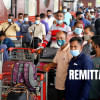The high cost of failing to reform the cigarette excise tax

The national budget for fiscal year 2023-2024 has already been announced with some positive changes in the budget to improve social welfare and measures towards tobacco control. However, the reform of the cigarette excise tax falls short; the proposed tax structure will result in relatively lower government revenue, compared to other tax structures, and yield only a small improvement in positive health impacts resulting from reduced consumption.
Over the years, there has been strong demand from economists and public health experts to reform the tax structure and switch to a specific tax system. Yet, in the proposed budget, Bangladesh has maintained its historical four-tiered ad valorem system with a minor price increase. It is far from the best practice and may even slow down the current decline in tobacco consumption, due to its short-sightedness.
Using a tax simulation model, we assessed the expected impact of the tax and price increases on cigarette consumption, tax revenues, and health outcomes and compared it with current budget proposals. "The Bangladesh Cigarette Tax Simulation Model" takes into account the recommended price for four tiers of cigarettes: premium, high, medium and low. The model, mainly developed by WHO and, in this case, contextualised for Bangladesh, is a widely used tool for tobacco simulation across the globe. It considers both demand and supply side effects as well as other economic factors such as inflation and economic growth.
According to the budget, the tax rates have remained at 65 percent in the medium, high, and premium tiers of cigarettes, but increased to 65 percent from 57 percent in the low tier. The price for low, medium high and premium tiers will therefore increase by 12.50 percent, 3.08 percent, 1.80 percent and 5.63 percent, respectively.
But small changes in the tax rates in cigarettes can significantly improve government revenue and reduce public health burden due to tobacco use. For instance, a group of experts recommend increasing prices by 37.50 percent, 7.69 percent, 8.11 percent and 5.63 percent for low, medium, high, and premium tiered cigarettes, respectively. Specifically, they recommended a significant increase in the lower tier.
The increases in cigarette prices proposed in the new budget fall short of the minimum increase required to reduce cigarette consumption significantly. While the price increase is a welcome move, it is unlikely to contribute to any progress towards achieving a Tobacco-Free Bangladesh by 2040
In the budget proposal, the changes suggested do not keep pace with inflation or account for the expected income growth of 2022-2023 as the real prices of cigarettes in the medium, and premium will be lower in 2023-24 than in 2022-23. In addition, high income growth will add to people's purchasing power, making cigarettes more affordable. Overall, falling cigarette prices relative to inflation and income growth will encourage cigarette consumption and counteract the success of other non-price tobacco control measures in reducing smoking at the population level.
The short-sighted measures will result in sales volume to remain almost the same mostly due to expected increase in the sales volume for high, and premium tier cigarettes. In contrast, if the recommended tax rates by experts are adopted, cigarette sales will be reduced by 207.95 million packs.
The total tax revenue (inclusive of supplementary duty, VAT, and the health development surcharge) is expected to increase from nearly Tk 333 billion to approximately Tk 390 billion. Adopting the recommended rates would also result in the revenue gain and raise the total collection to as high as Tk 431 billion. Therefore, the government is missing an opportunity for substantial revenue gain, which could have been useful in reducing the strain on the budget deficit.
In addition, the proposed price increases are expected to raise the nominal price of cigarettes by 11.39 percent on average which may induce some current smokers to quit cigarette smoking. The adult cigarette smoking prevalence is expected to drop minimally from 15.1 percent to 14.57 percent resulting in about 211,454 fewer premature deaths in current and future smokers over their lifetime.
If the recommended proposal is adopted – smoking prevalence will decrease to 13.92 percent and 982,972 deaths could be avoided over the lifetime of current and future smokers. In addition, the recommended proposal would result in a reduction in the number of adult smokers more than two times higher than expected under the approved budget (1.4 million vs. 0.60 million) which would save a significantly larger amount of health costs in future.
The increases in cigarette prices proposed in the new budget fall short of the minimum increase required to reduce cigarette consumption significantly. While the price increase is a welcome move, it is unlikely to contribute to any progress towards achieving a Tobacco-Free Bangladesh by 2040, an expressed goal of the government.
Shafiun Nahin Shimul is a CDC Foundation Fellow at School of Public Health, Georgia State University, and Associate Professor, Institute of Health Economics, University of Dhaka.

 For all latest news, follow The Daily Star's Google News channel.
For all latest news, follow The Daily Star's Google News channel. 










Comments